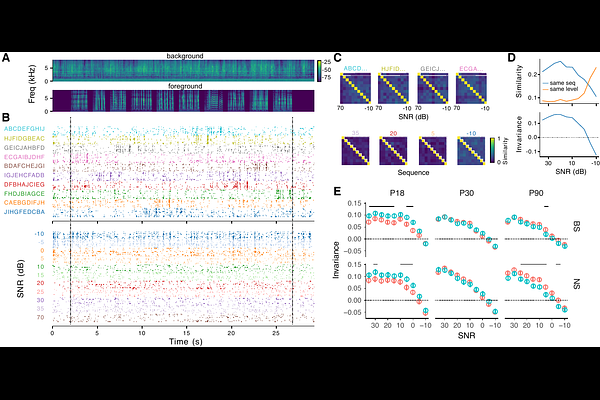A complex acoustical environment is necessary for maintenance and development in the zebra finch auditory pallium

A complex acoustical environment is necessary for maintenance and development in the zebra finch auditory pallium
Moseley, S. M.; Meliza, C. D.
AbstractPostnatal experience is critical to auditory development in vertebrates. The zebra finch (Taeniopygia castanotis) provides a valuable model for understanding how complex social-acoustical environments influence development of the neural circuits that support perception of vocal communication signals. We previously showed that zebra finches raised in the rich acoustical environment of a breeding colony (colony-reared, CR) perform twice as well in an operant discrimination task as birds raised with only their families (pair-reared, PR), and we identified deficits in functional properties within the auditory pallium of PR birds that could explain this behavioral difference. Here, using single-unit extracellular recordings from the L3 subdivision of field L and caudomedial nidopallium (NCM) at three developmental timepoints (18--20, 30--35, and 90--110 days post hatch), we tracked how experience affects the emergence of these functional properties. Whereas CR birds showed stable single-unit response properties from fledging to adulthood alongside improvements in population-level encoding, PR birds exhibited progressive deterioration in neural function. Deficits in PR birds began emerging at 18 days for population metrics and by 30 days for single-unit properties, worsening into adulthood. These included altered spike waveforms, firing rates, selectivity, discriminability, coding efficiency, and noise invariance. Notably, these deficits occurred despite PR birds receiving normal exposure to the song of a male tutor, suggesting that learning to sing is robust enough to compensate for impaired auditory processing. Our findings demonstrate that a complex acoustical environment is necessary for both maintenance and development of the cortical-level auditory circuits that decode conspecific vocalizations.